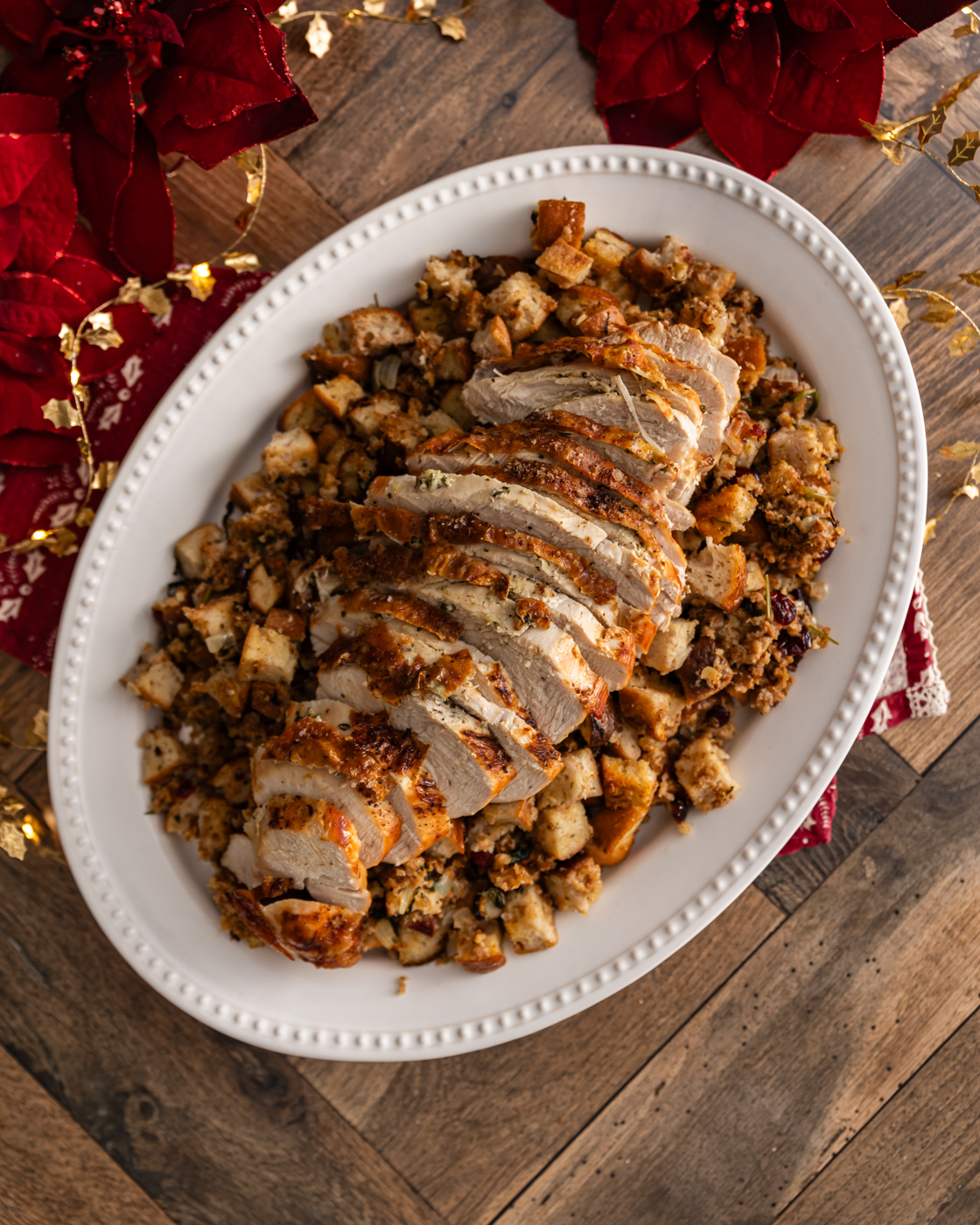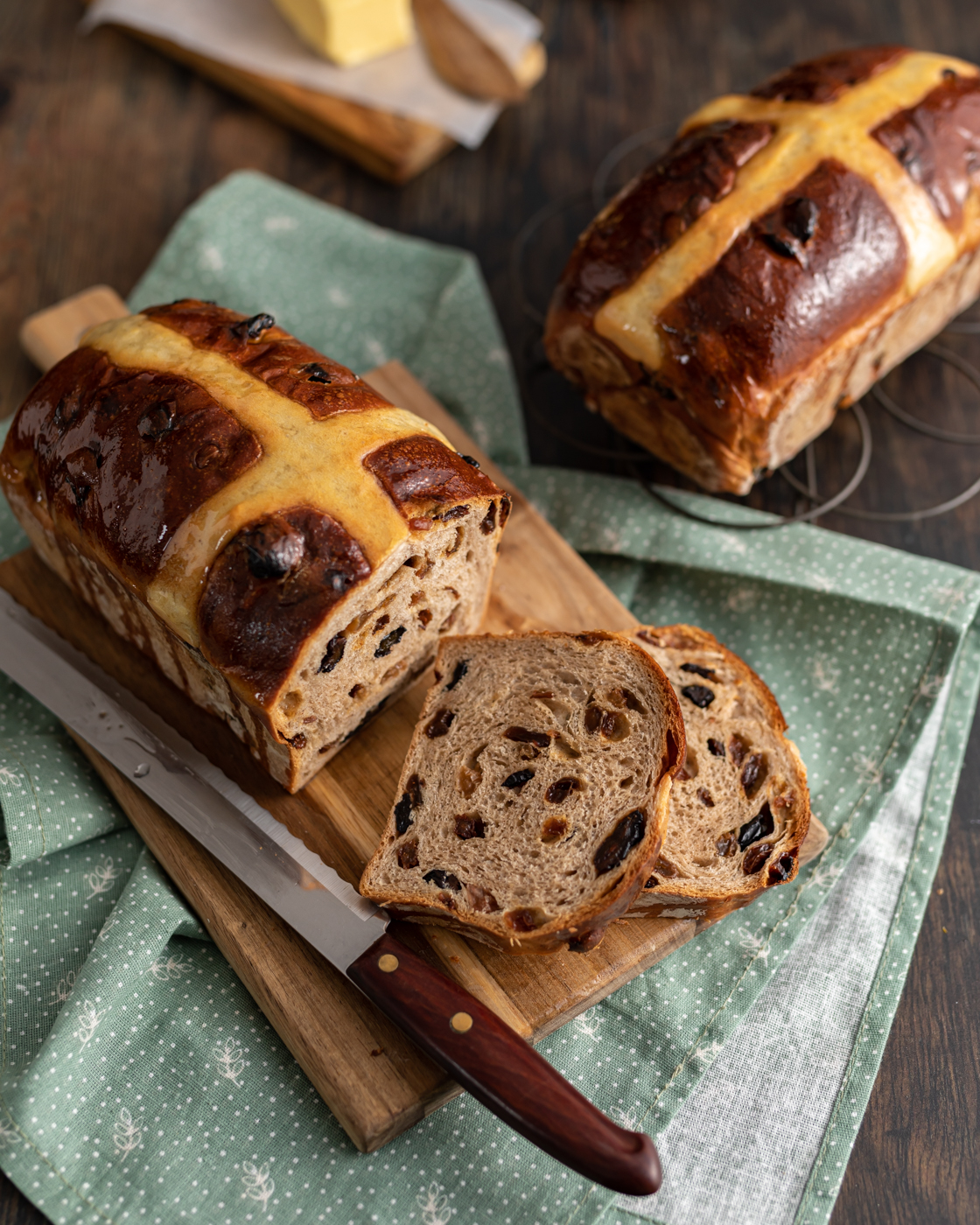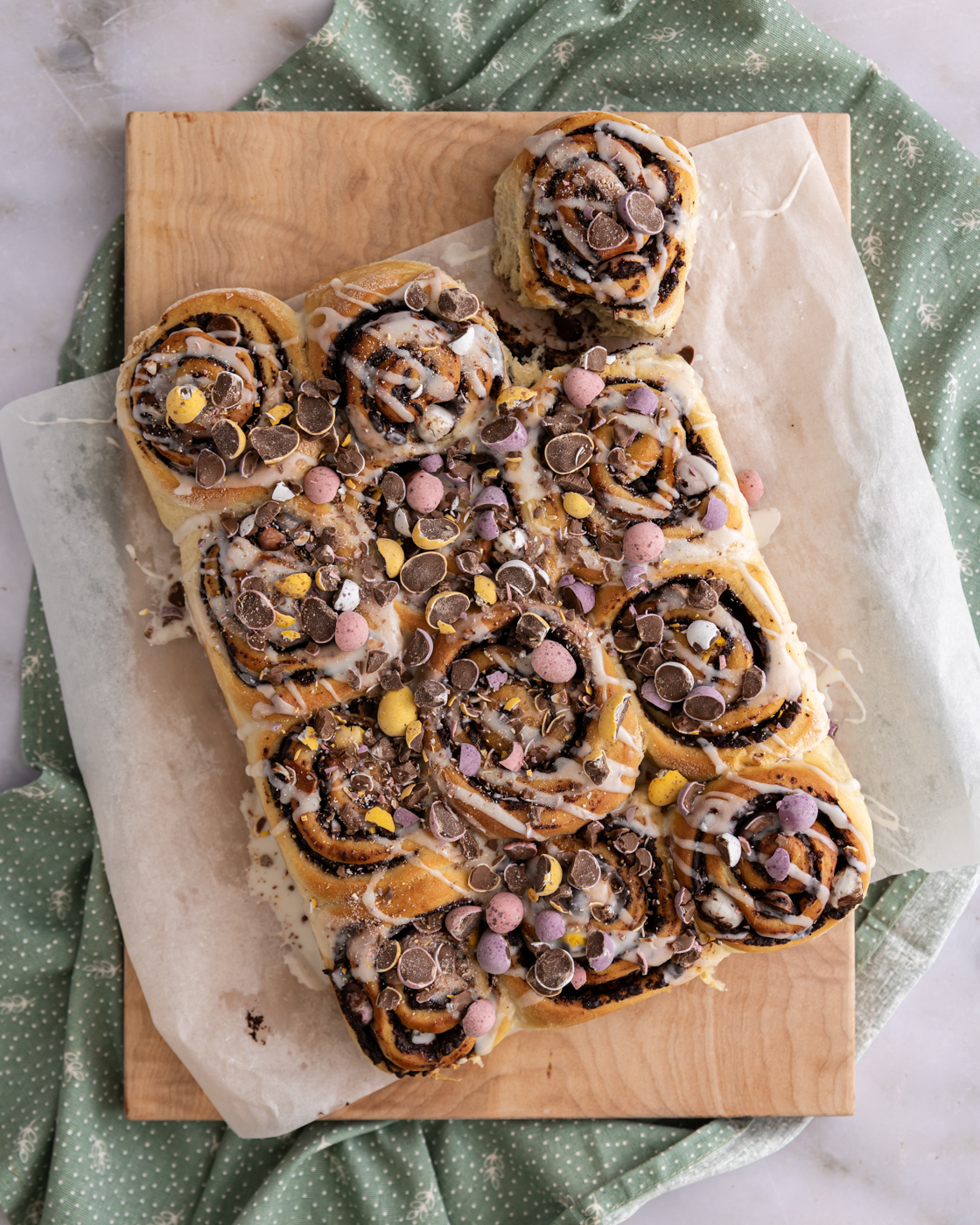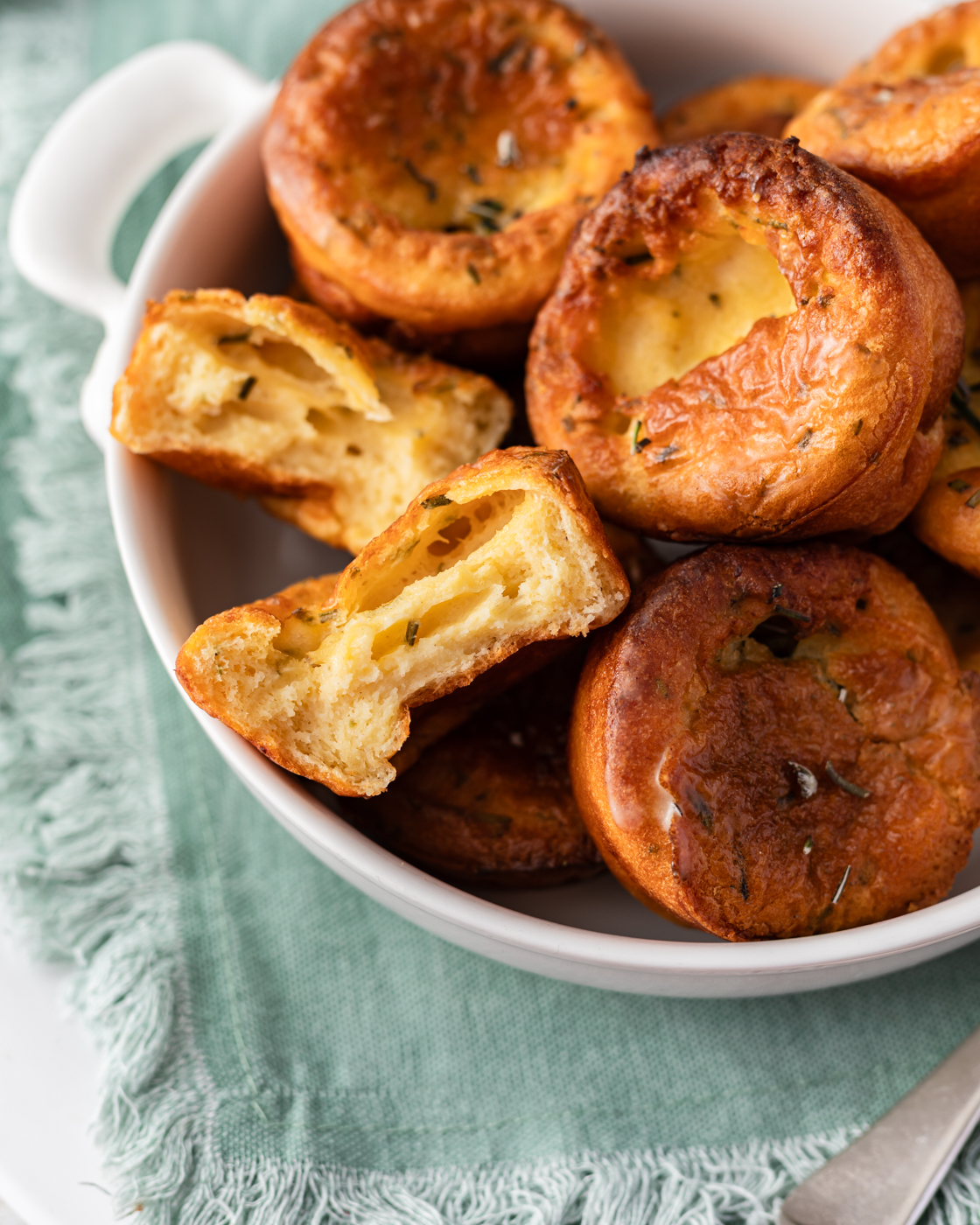

This loaf is bursting with all the delicious spices and fruits of the classic Easter treat, hot cross buns. Enjoy slices still warm from the oven or toasted the next day, always with a good lashing of butter, of course! We recommend starting the process the day before so that the loaves can be left to rise in the fridge overnight, ready for baking in the morning. This recipe does make two smaller loaves, but once cooled, you can pop slices into the freezer, ready to be toasted and enjoyed at any time. As with most bread recipes, a stand mixer takes a lot of the work out, but you can also make this by hand with some elbow grease.

Introduction
This loaf is bursting with all the delicious spices and fruits of the classic Easter treat, hot cross buns. Enjoy slices still warm from the oven or toasted the next day, always with a good lashing of butter, of course! We recommend starting the process the day before so that the loaves can be le
Ingredients
- 300ml milk
- 60g caster sugar
- 600g strong flour
- 2 tsp ground cinnamon
- 2 tsp allspice*
- 1 tsp salt
- 1x 7g pkt dried yeast
- 1 egg, lightly beaten
- 60g butter, softened & cubed
- 200g raisins
- 200g sultanas
- 3 tbsp strong flour
- 3 tbsp water
- 40g sugar
- 40ml water
FOR THE CROSS:
FOR THE GLAZE:
Method
- 1. * Not to be confused with mixed spice, which is a blend of various spices, allspice is a spice of its own and is what adds to a hot cross bun’s unique taste.
- 2. Combine milk and sugar in a microwave safe bowl or jug, pop this in the microwave for 45 seconds to 1 minute, depending on the power of your microwave. Tip: You want to just remove the chill from the milk so that it is tepid. Stir for 1-2 minutes so that the sugar starts to dissolve.
- 3. Whisk together the flour, spices and salt in the bowl of your stand mixer (or in a large bowl if making by hand). Add dried yeast along with the milk mixture and beaten egg.
- 4. Using the dough hook, knead on lowest speed setting until there is no dry flour visible. Give the bowl a scraping with a spatula, then leave to knead on low speed for 5 minutes. (If kneading by hand, knead for 10-15 minutes).
- 5. While still kneading, start adding the butter in 4-5 additions, waiting until there is no visible butter before adding the next bit. Once all has been added, scrape down the sides of the bowl and leave to knead on low speed for 5 minutes. (Again, if kneading by hand, this can take 10-15 minutes.)
- 6. The dough should be smooth and just barely sticky, if not sticky at all (don’t add any additional flour if it is.)
- 7. Add the raisins and sultanas and mix on low speed until they’ve been incorporated into the dough. Tip: If you find you do not get all the fruit incorporated with the mixer after about 2 minutes, tip the dough out onto a clean surface then press the fruits into the dough, folding it over and over until mixed in.
- 8. Place dough in a large lightly greased bowl and cover with a clean tea towel or similar. Leave to prove at room temperature until doubled in size. Tip: As this is an enriched dough, it will take longer to prove. With a room temperature of 18°C, this can take 3-4 hours. If you want to speed up the proving, place in a warm cupboard, warmer drawer, or heat your oven to lowest, then turn off and place the bowl inside the oven, this should then take 2-3 hours.
- 9. Once proved, turn the dough out onto a clean surface very lightly dusted with flour. Knock the dough back by flattening it then divide into 2 equal pieces.
- 10. Take one of the pieces and shape into a rectangle with a width just shorter than the length of your bread tins. To shape the loaf, start to roll the rectangle up, firmly pressing the edge of the dough into itself, roll again and firmly press into itself again, repeating until you have a thick roll of dough. Place this into a 2lb (23x13cm) loaf tin.
- 11. Repeat the shaping with the second piece of dough and place in a second loaf tin, cover the tins.
- 12. If baking on the same day, leave to prove at room temperature for half the time the first prove took, it should have risen just above the tin and bounce back when lightly pressed. If baking the next day, pop the tins in the fridge and leave overnight. (Before baking from the fridge, leave at room temperature for 30 minutes to 1 hour.)
- 13. Pre-heat the oven to 200°C / 180°C fan assisted. Place a large baking tray in the bottom of the oven to heat up and put a kettle of water on to boil.
- 14. Prepare the paste for the cross by mixing the flour and water until smooth. Spoon this into a small piping bag (or you could use a freezer bag) then snip off the end and pipe a cross on top of each loaf.
- 15. Place the loaves into the oven on the middle shelf, then pour the just-boiled water into the baking tray at the bottom of the oven, close the oven quickly so that you don’t lose too much steam. Tip: Adding steam when baking bread helps the bread rise more before the crust starts to form, resulting in a loaf with a little more rise.
- 16. Bake for 45-50 minutes.
- 17. Remove loaves from the oven and turn out from the baking tins (they should sound hollow when you tap the bottom of the loaf). Leave to cool on a wire rack.
- 18. For the glaze, combine sugar and water in a small pot and place over medium high heat, stir occasionally until the sugar has dissolved. Simmer for 2-3 minutes then remove from heat.
- 19. Brush the glaze over the tops of the loaves.
- 20. Best enjoyed on the day of baking, but just as good the next day toasted. Cooled slices can be put into freezer bags and frozen to be enjoyed later, simply toast from frozen.









